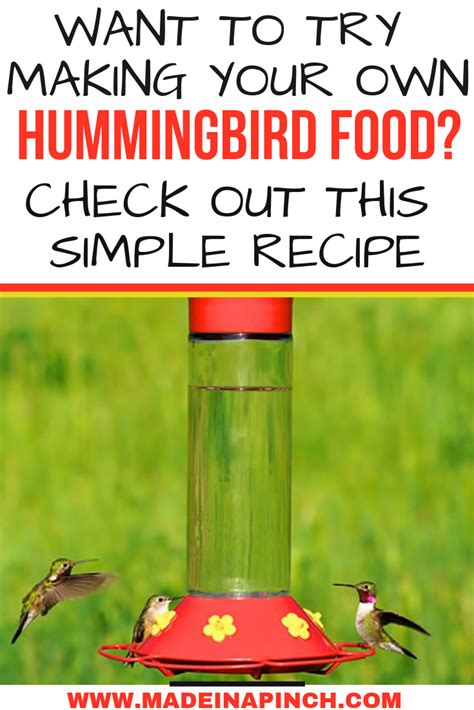Hummingbird Feeder Recipe: Attract these Dazzling Birds to Your Garden
Hummingbirds are captivating creatures, known for their vibrant colors, incredible speed, and the mesmerizing hum of their wings. Luring these tiny jewels to your garden is a rewarding experience, and the key is providing a reliable source of delicious nectar. This guide offers a simple yet effective hummingbird feeder recipe, ensuring your feathered friends have a feast fit for royalty.
The Best Hummingbird Feeder Recipe: Simple and Effective
This recipe avoids artificial sweeteners and focuses on ingredients that are both safe and irresistible to hummingbirds.
Ingredients:
- 1 cup of granulated white sugar (Avoid honey, brown sugar, or artificial sweeteners as they can be harmful to hummingbirds).
- 4 cups of water (Use clean, fresh water – tap water is generally fine).
Instructions:
- Combine ingredients: In a small saucepan, gently combine the sugar and water.
- Simmer gently: Heat the mixture over medium heat, stirring constantly, until the sugar is completely dissolved. Do not boil. Boiling can reduce the effectiveness of the nectar and may harm the birds.
- Cool completely: Allow the mixture to cool to room temperature before filling your hummingbird feeders. Hot nectar can kill hummingbirds.
- Fill and enjoy: Once cooled, carefully fill your hummingbird feeders. Change the nectar every 3-5 days, or more often in hot weather, to prevent spoilage and the growth of harmful bacteria or mold.
Cleaning Your Hummingbird Feeder: A Crucial Step
Maintaining a clean feeder is just as important as providing fresh nectar. Dirty feeders can harbor bacteria and mold which are dangerous to hummingbirds. Here's how to properly clean your feeder:
- Disassemble: Take apart your feeder completely, separating all parts that can be cleaned.
- Wash thoroughly: Wash all parts with hot, soapy water using a bottle brush to reach tight spots. Ensure you remove all traces of old nectar and any residue.
- Rinse completely: Rinse all parts thoroughly with clean, hot water to eliminate any soap residue.
- Air dry: Allow all parts to air dry completely before reassembling and refilling with fresh nectar.
Placement and Attracting Hummingbirds: Tips for Success
Choosing the right location for your feeder will increase your chances of attracting these beautiful birds:
- Visibility: Place your feeder in a visible spot, preferably near flowers and other plants that hummingbirds naturally feed on. Avoid placing the feeder in direct sunlight, as the nectar can spoil faster.
- Protection from the elements: Shield your feeder from rain and strong winds whenever possible.
- Predator protection: Position the feeder away from branches or other perches that could attract predators like cats.
Beyond the Recipe: Enriching Your Hummingbird Habitat
While a feeder provides a supplementary food source, providing a hummingbird-friendly environment significantly increases your chances of attracting and supporting these amazing birds. Plant native flowers, shrubs, and trees that produce nectar-rich blooms. Choose a variety that blooms at different times throughout the season to ensure a consistent food supply.
By following this recipe, practicing diligent cleaning, and creating a welcoming habitat, you'll be well on your way to enjoying the beauty and energy of hummingbirds visiting your garden. Remember to observe and enjoy these fascinating creatures – it’s a privilege to share your space with them!
